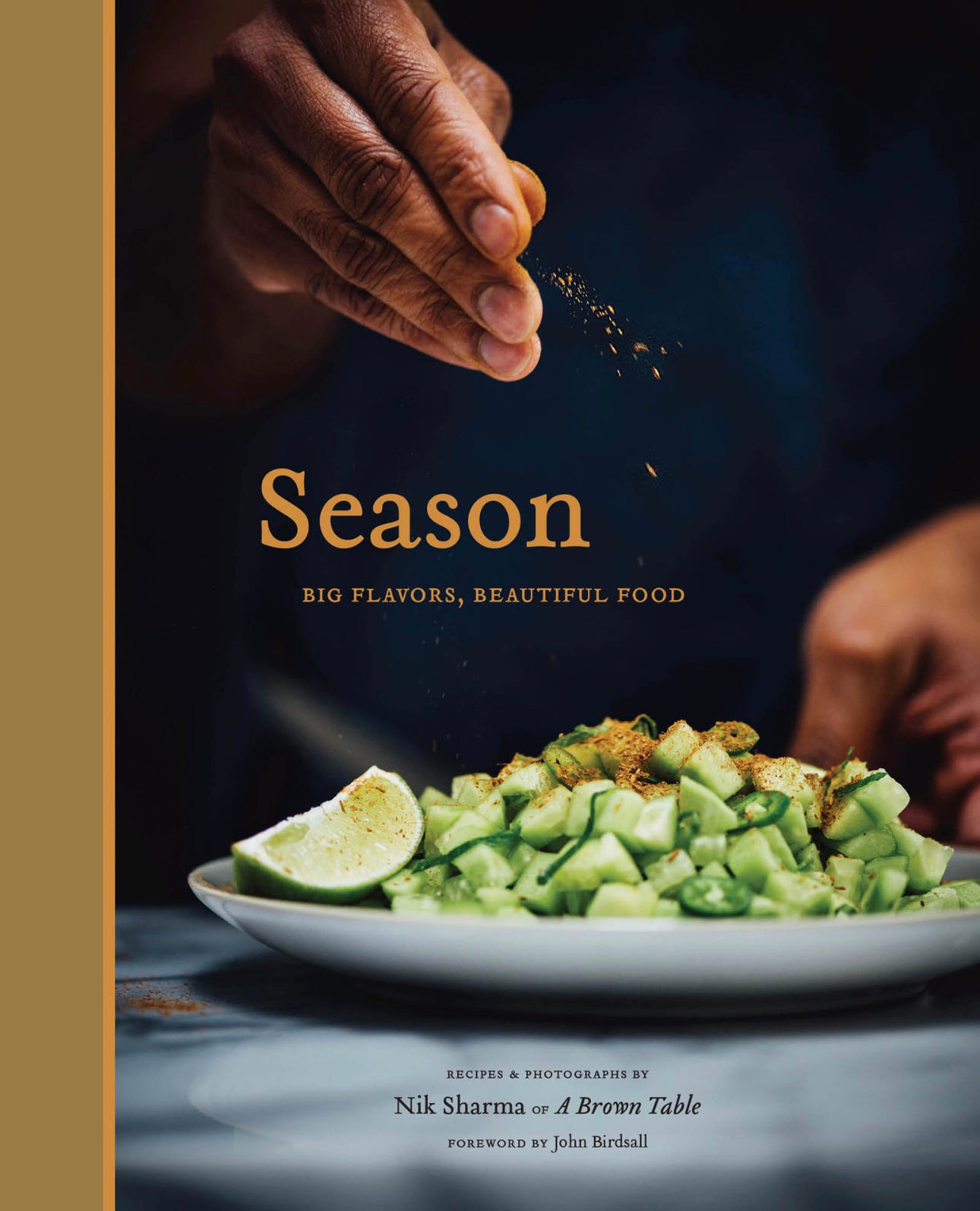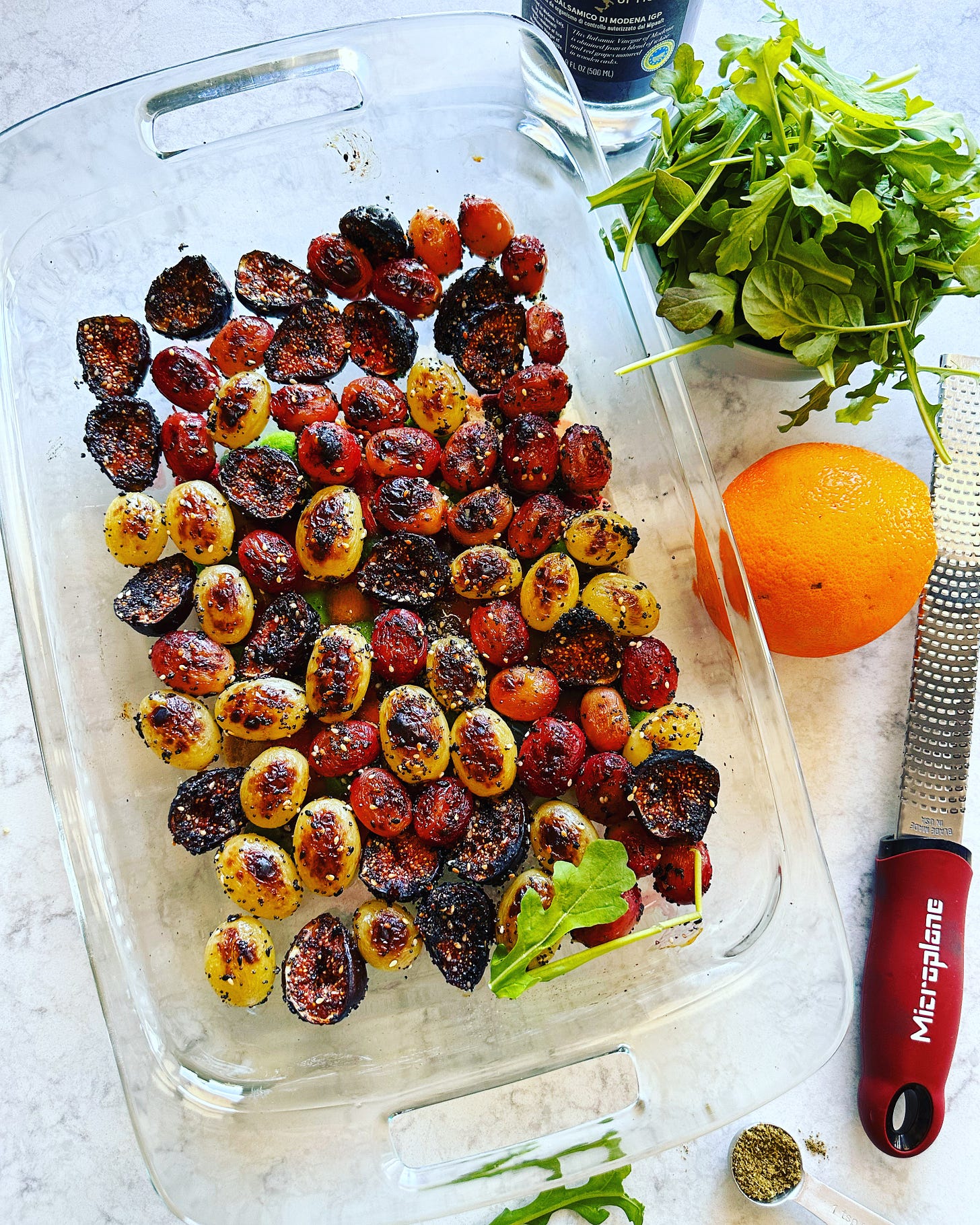Exciting Salads from an Exciting New Cookbook
Featuring the flavor stylings of the inimitable Nik Sharma

BY THE TIME NIK SHARMA’S FIRST COOKBOOK, Season: Big Flavors, Beautiful Food, hit the shelves back in 2018, he was already a rising star in the food universe, thanks to his multiple-award-winning blog, A Brown Table, and his featured column in the San Francisco Chronicle, A Brown Kitchen. But Season placed Sharma’s star in a higher sphere.
Season is a kind of immigrant hero’s journey with recipes, featuring tales of challenges, small triumphs, insights, and transformation. And it’s also the kind of inspiring story most of us would wish upon anyone who cares enough about this country to come here and make it their true home.
In Season’s introduction, Sharma writes about growing up gay and closeted in Bombay, in a family that loved to cook; arriving in Cincinnati (with just two suitcases and the pressure cooker his parents insisted he’d need) to study molecular genetics at the University of Cincinnati College of Medicine; coming out, moving about (from the Midwest, to Washington DC, and to California, where he now lives with his husband, Michael), and coming into his own.
While working in the Department of Medicine at Georgetown University (and also earning a master’s degree in public policy at Georgetown), Sharma finally began to realize that more than science it was cooking and writing about food that fulfilled him. So in 2011, he started his blog, A Brown Table, which has evolved a lot since then.
Early on, as a gay, brown-skinned writer, Sharma endured online cruelty and prejudice. But as he wrote in the introduction to Season: “Sometimes during moments of vulnerability, you can find your strength and voice.”
Which is exactly what he did with his first cookbook.
And the press—including the New York Times, Christopher Kimball’s Milk Street, The New Yorker, New York Magazine’s Grub Street, to name just a few—gobbled it up.
But I’m here to point out that the proof is always in the parathas (which Sharma happens to excel at making). Not a single word of his lovely writing and heartening biography would mean a thing to cookbook users if Sharma’s recipes didn’t work. But they do.
In addition to creating a kind of freeform, edible map of Sharma’s life so far, the recipes in Season combine a scientist’s curiosity and precision with an artist’s daring and verve. He’s big on technique, but flavor comes first. And while strongly influenced by his Indian upbringing, of course, his dishes grab and recombine flavors from all over, with lots of surprise—the good kind. So: chicken noodle soup with Omani limes, Bombay frittata, cocoa spiced bean and lentil soup, upside down orange and fennel cornmeal cake, smoked sardines and kumquat crostini, egg salad with toasted coriander, toasted cumin lemonade, coriander gravlax.
Hell, yes.
Sharma followed Season with the bestselling The Flavor Equation: The Science of Great Cooking Explained + More Than 100 Essential Recipes, in which used his science background to explore not just the importance of texture, aroma, and taste but also emotion, sight, and sound.
And now he has a new book coming out October 24 called Veg-Table: Recipes, Techniques, and Plant Science for Big-Flavored, Vegetable-Focused Meals. It’s a beautiful book that delivers on that title, featuring Sharma’s own gorgeous photography, as usual, typically delicious-sounding recipes, and delightfully science-y features that really put it over the top for me. (NOTE: Sharma has always done his own photography for his books and blog—but I’ve shot the photos for the recipes I’ve made here today; don’t blame him.)
The book gives 50 vegetables the charming Sharma treatment, which includes their history and origin, preferred growing seasons, which parts we eat, etc. He even parses exactly what a vegetable is—you might be surprised here—and includes extremely useful science-based storage and cooking tips that will make the lives of anyone who ever loved and lost a vegetable much easier.

I’m talking about Sharma’s REFRIGERATOR AND PANTRY PRODUCE CHEAT SHEET (did you know you were supposed to store your garlic in the dark?) and such death- defying information as this: “Some vegetables—like yams, bamboo shoots, and cassava—must be cooked completely before eating because they contain naturally occurring toxic chemicals that heat destroys.” It was shocking and thrilling news to me that yams are so sneaky and diabolical. I may dress as a yam for Halloween.
Also, the recipes are organized according to plant family, which I love. You might think you’ve never eaten an Amaryllis but you have if you enjoy leeks, garlic, shallots, scallions, onions, and chives (and if you don’t I don’t want to know you).
Of course, my main concern with the book was the salad department, where I found lovely surprises, including the fact that some of them are actually two salads combining hot and cold elements. Asparagus Salad with Cashew Green Chutney. Chili Beets + Lima Beans with Cucumber Olive Salad. Jicama and Pea Salad with Yuzu Vinaigrette. Okra, Feta, and Barley Salad with Pumpkin Seed Sauce. Breaded Harissa Eggplant + Lentil Salad.
Hell, yes, again. (But this book goes way beyond salads.)
Keep reading with a 7-day free trial
Subscribe to The Department of Salad: Official Bulletin to keep reading this post and get 7 days of free access to the full post archives.










